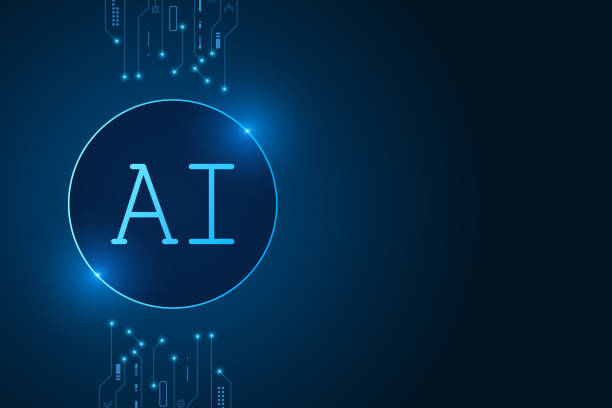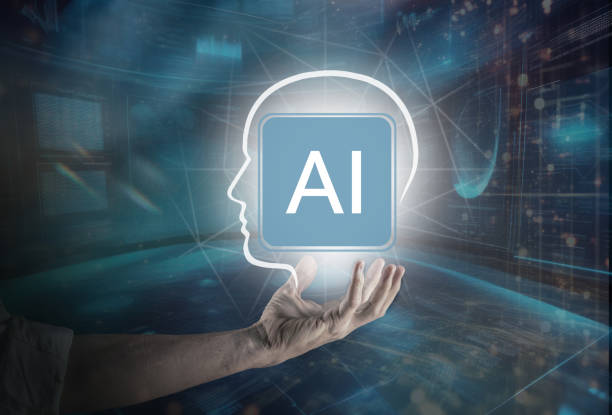What is Artificial Intelligence and What are its Applications?

#Artificial_Intelligence (AI) is a branch of computer science that deals with building machines capable of performing tasks that typically require human intelligence.
These tasks include learning, problem-solving, pattern recognition, natural language understanding, and decision-making.
In other words, AI strives to create systems that can think and act like humans.
The applications of artificial intelligence are extremely broad and affect almost all aspects of our lives.
In #Healthcare, AI can be used for diagnosing diseases, developing new drugs, and providing personalized care.
In #Industry, AI is used for automating processes, improving product quality, and reducing costs.
In #Transportation, AI can be used for developing self-driving cars, improving traffic management, and reducing accidents.
#AI also has applications in #Education, #Finance, #Marketing, #Customer_Service, and many other fields.
Artificial intelligence enables us to perform tasks faster, more efficiently, and with greater accuracy.
For example, in customer service, AI-powered customer support systems can answer customer questions and resolve their issues.
These systems can be available 24/7 and help customers quickly find the answers they need.
Ultimately, artificial intelligence is a powerful technology that can help us solve many complex challenges and improve our lives.
However, it is important to use this technology responsibly and ethically to reap its benefits and avoid its potential risks.
Artificial Intelligence on Wikipedia
Is your online sales not performing as expected? With Rasav, permanently solve low sales and poor user experience!
✅ Increase visitor-to-customer conversion rate
✅ Create an enjoyable user experience and boost customer trust
⚡ Act now for a free consultation!
Types of Artificial Intelligence: Approaches and Classifications

Artificial intelligence can be divided into different categories based on their capabilities and performance.
One common classification divides AI into two general categories: Narrow AI and General AI.
#Narrow_AI, or weak AI, is a type of artificial intelligence designed to perform a specific task.
This type of AI performs very well at that specific task, but it cannot perform other tasks.
For example, a facial recognition system or machine translation software are examples of narrow AI.
#General_AI, or strong AI, is a type of artificial intelligence that can perform any task a human can.
This type of AI is still in the development stages and has not yet been fully realized.
Achieving #strong_AI is the goal of many researchers and scientists in the field of artificial intelligence.
Furthermore, artificial intelligence can also be categorized based on the different approaches used for their development.
Some common approaches in AI development include:
- Machine Learning
- Deep Learning
- Natural Language Processing
- Computer Vision
- Robotics
Each of these approaches uses its own specific methods and techniques to solve problems and create intelligent systems.
For example, machine learning enables systems to learn from data and improve their performance without explicit programming.
Ultimately, choosing the appropriate approach for AI development depends on the type of problem we intend to solve and the available data.
Types of Artificial Intelligence
Machine Learning and Deep Learning: Differences and Applications
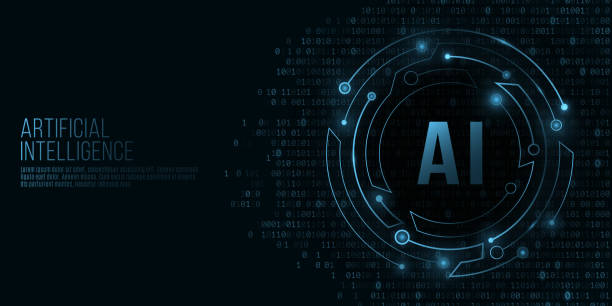
Machine Learning and Deep Learning are two important subsets of #Artificial_Intelligence that enable systems to learn from data and improve their performance without explicit programming.
However, there are fundamental differences between these two approaches.
Machine learning is a broader approach that includes various algorithms enabling systems to extract patterns and relationships from data.
These algorithms can be used to solve different problems such as classification, regression, clustering, and dimensionality reduction.
What is Machine Learning?
Deep learning is a subset of machine learning that uses Deep Neural Networks to learn from data.
Deep neural networks consist of multiple layers of interconnected nodes (neurons).
These networks can recognize complex patterns in data and are used to solve more complex problems such as image recognition, natural language processing, and speech recognition.
In summary, the main difference between machine learning and deep learning is that deep learning uses deep neural networks to learn from data, while machine learning uses a wider variety of algorithms.
Deep learning typically requires more data for training and is computationally more expensive, but it can provide better results for complex problems.
For a better understanding of the differences, refer to the table below:
| Feature | Machine Learning | Deep Learning |
|---|---|---|
| Structure | Diverse Algorithms | Deep Neural Networks |
| Data Required | Less | More |
| Computational Complexity | Lower | Higher |
| Application | Simpler Problems | More Complex Problems |
Natural Language Processing: How Computers Understand Human Language
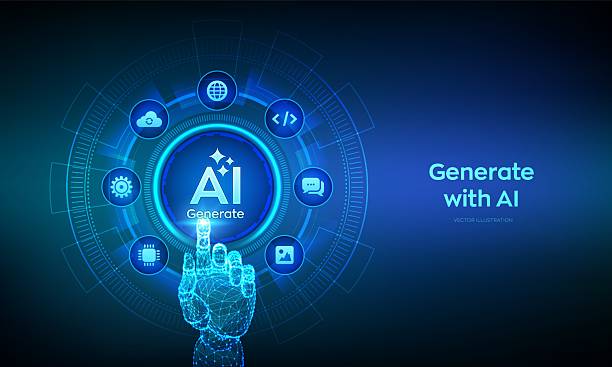
Natural Language Processing (NLP) is a branch of #Artificial_Intelligence that enables computers to understand, interpret, and generate human language.
The goal of NLP is to create systems that can communicate with humans in natural language and perform tasks such as machine translation, text summarization, sentiment analysis, and question answering.
NLP uses various techniques such as syntactic analysis, semantic analysis, and discourse analysis to understand human language.
Syntactic analysis deals with sentence structure and determines the role of words and phrases in a sentence.
Semantic analysis deals with the meaning of words and phrases and tries to understand the author’s or speaker’s intent.
Discourse analysis deals with the relationships between sentences and paragraphs and aims to understand the text as a whole.
NLP is used in various applications such as chatbots, machine translation systems, search engines, and sentiment analysis systems.
Chatbots can answer user questions and solve their problems.
Machine translation systems can translate text from one language to another.
Search engines can find the information users need on the internet.
Sentiment analysis systems can detect the emotions present in text.
What is Natural Language Processing?
For example, in marketing, NLP can be used to analyze customer reviews on social media and identify positive and negative sentiments.
This information can help companies improve their products and services and increase customer satisfaction.
Don’t have a corporate website yet and missing out on online opportunities? With professional corporate website design by Rasav,
✅ Double your business’s credibility
✅ Attract new customers
⚡ Free consultation for your corporate website!
Computer Vision: How Computers See Images
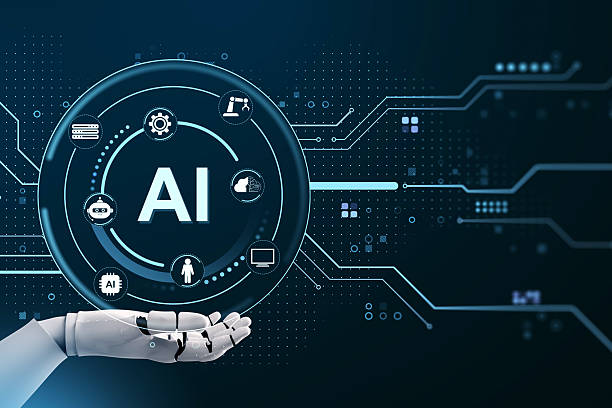
Computer Vision is a branch of #Artificial_Intelligence that enables computers to see, interpret, and understand images.
The goal of computer vision is to create systems that can process images like humans and perform tasks such as object recognition, facial recognition, pattern recognition, and 3D reconstruction.
Computer vision uses various techniques such as image processing, machine learning, and deep learning to understand images.
Image processing deals with improving image quality and extracting important features from them.
Machine learning enables systems to learn from image data and recognize patterns and relationships within them.
Deep learning uses deep neural networks to learn from images and can recognize complex patterns within them.
Computer vision is used in various applications such as self-driving cars, surveillance systems, medical diagnosis, and robotics.
Self-driving cars use computer vision to detect obstacles and navigate.
Surveillance systems use computer vision to detect suspicious movements and identify individuals.
Medical diagnosis uses computer vision to diagnose diseases from medical images.
Robotics uses computer vision to understand the surrounding environment and perform various tasks.
Computer Vision
For example, in manufacturing, computer vision can be used for product quality inspection and detecting potential defects.
This can help reduce costs and improve product quality.
The Future of Artificial Intelligence: Opportunities and Challenges

The future of Artificial Intelligence (AI) is full of great opportunities and challenges.
#AI can help us solve many complex problems and improve our lives, but at the same time, it can also pose risks.
Among the opportunities of artificial intelligence are:
- Improving productivity and efficiency in various industries
- Developing new drugs and improving disease diagnosis
- Creating self-driving cars and reducing accidents
- Improving education and learning
- Solving environmental problems
Among the challenges of artificial intelligence are:
- Job displacement due to automation
- Discrimination and inequality
- Privacy and data security
- Ethical issues
- Control of #Strong_AI
To benefit from the opportunities of artificial intelligence and mitigate its risks, it is necessary to use this technology responsibly and ethically.
Furthermore, we must pay attention to training and developing the skills required to work in the world of artificial intelligence.
The Future of Artificial Intelligence
For example, governments and organizations should formulate policies that protect workers’ rights against automation and provide training opportunities for developing new skills.
The Impact of Artificial Intelligence on Various Industries: Changes and Transformations

The impact of artificial intelligence on various industries is very significant, leading to fundamental changes and transformations in how work is done and services are provided.
Virtually no industry remains untouched by the effects of artificial intelligence.
In the #Healthcare industry, AI can be used for disease diagnosis, new drug development, personalized care, and improving hospital management.
In the #Manufacturing industry, AI can be used for process automation, improving product quality, reducing costs, and predicting equipment failures.
In the #Financial industry, AI can be used for fraud detection, risk management, providing financial advice, and improving customer services.
The Impact of Artificial Intelligence on Industries
For a better understanding of the impact of artificial intelligence on industries, refer to the table below:
| Industry | AI Impacts | Examples |
|---|---|---|
| Healthcare | Faster and more accurate diagnosis, drug development, personalized care | Cancer diagnosis using medical images, surgical robots |
| Manufacturing | Process automation, quality control, predictive maintenance | Production line robots, automated inspection systems |
| Finance | Fraud detection, risk management, smart financial advice | Algorithms for detecting suspicious transactions, customer service chatbots |
| Retail | Product recommendations, inventory management, personalized shopping experience | Product recommendations based on purchase history, warehouse robots |
For example, in the retail industry, artificial intelligence can be used to recommend products to customers, manage inventory, provide customer services, and improve the shopping experience.
Ethics in Artificial Intelligence: Responsibilities and Challenges

Ethics in Artificial Intelligence (AI) is a very important and challenging topic that examines ethical issues related to the development and use of artificial intelligence.
With the increasing advancement of #AI, it is necessary to pay attention to the responsibilities and ethical challenges of this technology to ensure its proper and fair use.
Some important ethical issues in artificial intelligence include:
- Discrimination and inequality
- Privacy and data security
- Accountability
- Transparency and explainability
- Control of artificial intelligence
Discrimination and inequality occur when AI systems inadvertently or knowingly replicate or exacerbate discriminatory behaviors.
Privacy and data security are jeopardized when individuals’ personal data is collected, stored, and used without their consent or adequate protection.
Accountability arises when an #AI system makes a mistake and it is unclear who is responsible for it.
Transparency and explainability are important when we cannot understand the reasoning behind an AI system’s decisions.
The control of #AI becomes concerning when #AI systems become too powerful and we cannot control them.
Ethics in Artificial Intelligence
For example, in the recruitment sector, AI systems may inadvertently overlook individuals with certain characteristics (such as a specific gender or race).
Is your current e-commerce website not generating the sales you expect?
Rasav is an expert in professional e-commerce website design!
✅ An attractive and user-friendly site aimed at increasing sales
✅ High speed and security for an ideal shopping experience⚡ Get a free consultation for your online store design with Rasav!
How to Learn Artificial Intelligence: Resources and Learning Paths

Learning Artificial Intelligence (AI) can be a challenging but highly rewarding process.
Fortunately, there are various resources and learning paths available for those interested in this field.
Some common resources for learning artificial intelligence include:
- Online courses (such as Coursera, edX, and Udacity)
- Books and scientific articles
- Video tutorials (such as YouTube)
- Online forums and groups
- #AI bootcamps
Some common learning paths for artificial intelligence include:
- Learning the basics of mathematics and statistics
- Learning programming languages (such as Python)
- Learning machine learning and deep learning concepts
- Learning natural language processing and computer vision
- Completing practical projects
To begin learning artificial intelligence, you can start with introductory online courses and then gradually move on to more advanced topics.
Additionally, you can strengthen your skills by working on practical projects.
Learning Artificial Intelligence
For example, you can undertake a simple image recognition project using Python libraries such as TensorFlow or PyTorch.
Artificial Intelligence in Iran: Current Status and Outlook
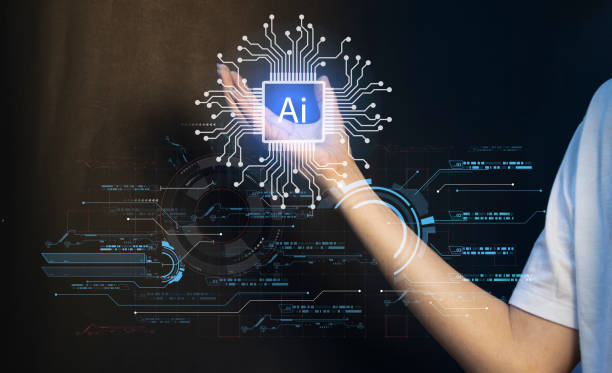
Artificial intelligence in Iran is a nascent but growing field.
In recent years, attention to this field in Iran has increased, and efforts are underway to develop it.
Some of the activities undertaken in the field of artificial intelligence in Iran include:
- Establishment of #AI research centers and laboratories in universities
- Holding educational courses and specialized workshops in the field of artificial intelligence
- Supporting active #AI startups
- Holding national and international conferences and seminars on #AI
Some of the challenges facing the development of artificial intelligence in Iran include:
- Shortage of skilled workforce
- Lack of necessary infrastructure
- Lack of investment
- Limitations in data access
- Legal and regulatory issues
Despite these challenges, the outlook for artificial intelligence in Iran is bright.
Given the high potential of this technology and the efforts made, it is expected that artificial intelligence will play a significant role in Iran’s economic and social development in the coming years.
For example, the Iranian government can help develop artificial intelligence in the country by supporting knowledge-based companies and creating the necessary infrastructure.
Artificial Intelligence in Iran
Frequently Asked Questions
| Question | Answer |
|---|---|
| 1. What is Artificial Intelligence (AI)? | It is a branch of computer science that aims to create machines capable of simulating human intelligence and performing tasks that require human thinking, such as learning, problem-solving, and decision-making. |
| 2. What are the main types of Artificial Intelligence? | They can be classified into Narrow AI (focused on a specific task), General AI (possessing comprehensive human capabilities), and Super AI (surpassing human intelligence). |
| 3. Mention some common applications of Artificial Intelligence in our daily lives. | These include voice assistants (like Siri and Alexa), recommendation systems (like Netflix and Amazon), self-driving cars, facial recognition systems, and spam filters. |
| 4. What is the difference between Artificial Intelligence and Machine Learning? | Artificial Intelligence is the broader concept of creating intelligent machines, while Machine Learning is a subset of AI that focuses on enabling systems to learn from data without explicit programming. |
| 5. What is Deep Learning? | It is a subset of Machine Learning that uses multi-layered artificial neural networks (deep neural networks) to process data and discover complex patterns, used in image and speech recognition. |
| 6. What are the most prominent benefits of Artificial Intelligence? | Improving efficiency and productivity, automating repetitive tasks, making better decisions based on big data analysis, and developing solutions for complex problems in fields such as medicine and science. |
| 7. What are the main challenges facing the development and deployment of Artificial Intelligence? | These include the need for massive amounts of high-quality data, privacy and security issues, bias in data and algorithms, and high development and maintenance costs. |
| 8. Does Artificial Intelligence raise ethical or social concerns? | Yes, it raises concerns related to privacy, algorithmic bias, job displacement due to automation, accountability for errors made by intelligent systems, and the need for a regulatory framework. |
| 9. How can Artificial Intelligence affect the future of the job market? | It can lead to the automation of some routine jobs, but it will also create new jobs that require advanced skills in developing, operating, and maintaining AI systems. |
| 10. What are some modern or promising technologies in the field of Artificial Intelligence? | These include advanced Natural Language Processing (NLP) (such as large language models like ChatGPT), computer vision, robotics, and Generative AI. |
And other advertising agency services by Rasav in the field of advertising
- Smart Marketplace: A professional solution for improving SEO ranking with a focus on custom programming.
- Smart Custom Software: An innovative service for increasing user engagement through SEO-driven content strategy.
- Smart Google Ads: Designed for businesses looking to increase click-through rates through optimization of key pages.
- Smart Social Media: An innovative service for increasing digital branding through intelligent data analysis.
- Smart Custom Software: A fast and efficient solution for customer acquisition with a focus on marketing automation.
And over hundreds of other services in the field of internet advertising, advertising consulting, and organizational solutions
Internet Advertising | Advertising Strategy | Advertorials
Sources
Digiato: Complete Guide to Artificial Intelligence
Zoomit: Everything About Artificial Intelligence
ITresan: What is Artificial Intelligence? A Comprehensive Introduction
Farnet: Comprehensive Review of Artificial Intelligence and its Applications
? For your business’s leap in the digital space, Rasav Afarin Digital Marketing Agency smooths your path to success with services such as custom website design, Search Engine Optimization (SEO), and professional social media management.
📍 Tehran, Mirdamad Street, next to Central Bank, Southern Kazeroun Alley, Ramin Alley, No. 6

